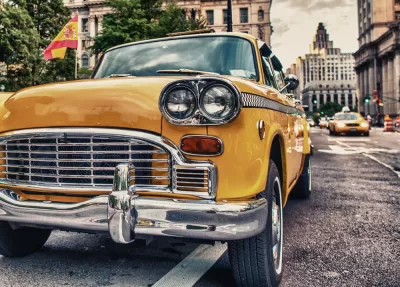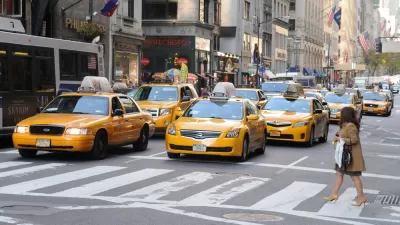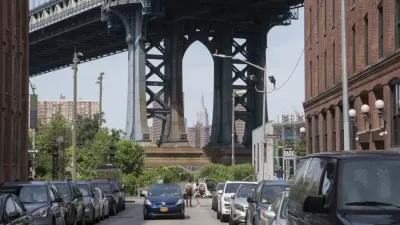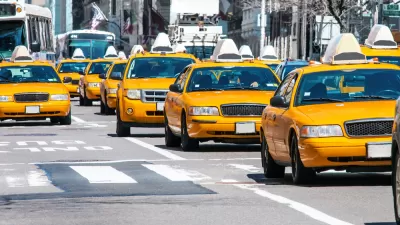Stakeholders are hoping that the 93 million car-for-hire trip records will better inform a heated debate in NYC.

There are many questions about the effects that the app-based car service company Uber is having in New York City. Among them: Is Uber expanding the market, or would Uber users otherwise hail taxis? Are Uber drivers causing more traffic congestion in the city’s core business district?
Thanks to the release of a lot of data from both Uber and the city’s Taxi and Limousine Commission (TLC), reporters at FiveThirtyEight have begun to make sense out of the controversial claims made by the various stakeholders. Carl Bialik, Andrew Flowers, Reuben Fischer-Baum and Dhrumil Mehta analyzed 93 million records of Uber and TLC taxi rides taken over a six-month period in 2014. The data include date, time, and pickup coordinates.
While there are not yet many conclusive answers, Bialik et. al. have revealed some important facts. "While we can’t yet say whether Uber has exacerbated Manhattan congestion, the data we’ve analyzed shows that Uber has a point when it claims that it is doing a better job than taxis in serving the boroughs of New York City outside of Manhattan." During April to September of last year, 22 percent of Uber rides originated outside of Manhattan, compared with 14 percent for yellow and green taxis (green taxis are only allowed to pick up rides outside of the Manhattan core).
"The city, though, has a point when it says that most of Uber’s trips are in the city’s busiest areas." In fact, the share of Uber pickups in the core business district is nearly identical to conventional taxi pickups, 63 percent and 62 percent, respectively.
The FiveThirtyEight team promises more insights to come. "[We’ll be] looking at whether Uber serves predominantly black neighborhoods or low-income neighborhoods better than cabs do, for instance."
FULL STORY: Uber Is Serving New York’s Outer Boroughs More Than Taxis Are

Rethinking Redlining
For decades we have blamed 100-year-old maps for the patterns of spatial racial inequity that persist in American cities today. An esteemed researcher says: we’ve got it all wrong.

Montreal Mall to Become 6,000 Housing Units
Place Versailles will be transformed into a mixed-use complex over the next 25 years.

Planetizen Federal Action Tracker
A weekly monitor of how Trump’s orders and actions are impacting planners and planning in America.

Santa Clara County Dedicates Over $28M to Affordable Housing
The county is funding over 600 new affordable housing units via revenue from a 2016 bond measure.

Why a Failed ‘Smart City’ Is Still Relevant
A Google-backed proposal to turn an underused section of Toronto waterfront into a tech hub holds relevant lessons about privacy and data.

When Sears Pioneered Modular Housing
Kit homes sold in catalogs like Sears and Montgomery Ward made homeownership affordable for midcentury Americans.
Urban Design for Planners 1: Software Tools
This six-course series explores essential urban design concepts using open source software and equips planners with the tools they need to participate fully in the urban design process.
Planning for Universal Design
Learn the tools for implementing Universal Design in planning regulations.
City of Camden Redevelopment Agency
City of Astoria
Transportation Research & Education Center (TREC) at Portland State University
Regional Transportation Commission of Southern Nevada
Toledo-Lucas County Plan Commissions





























